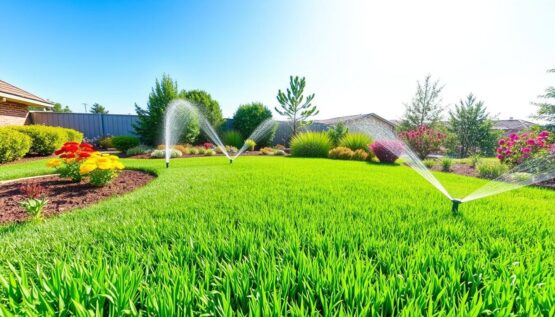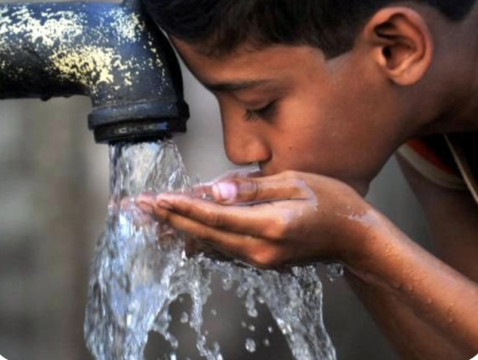In today’s world, the availability of clean and safe drinking water is a fundamental necessity that we often take for granted. However, the reality is that water sources can be vulnerable to a wide range of contaminants, from bacteria and viruses to heavy metals and chemical pollutants. Fortunately, modern water purification systems have evolved to address these challenges, ensuring that the water we consume is not only aesthetically pleasing but also free of harmful substances.
This article provides a comprehensive overview of the various water purification technologies and techniques used in both residential and commercial settings. By delving into the science behind these systems, we will explore how they work to remove impurities, disinfect water, and maintain the overall quality of our drinking supply. From basic filtration methods to advanced desalination processes, this article will equip readers with a deeper understanding of the critical role that water purification plays in safeguarding our health and the environment.
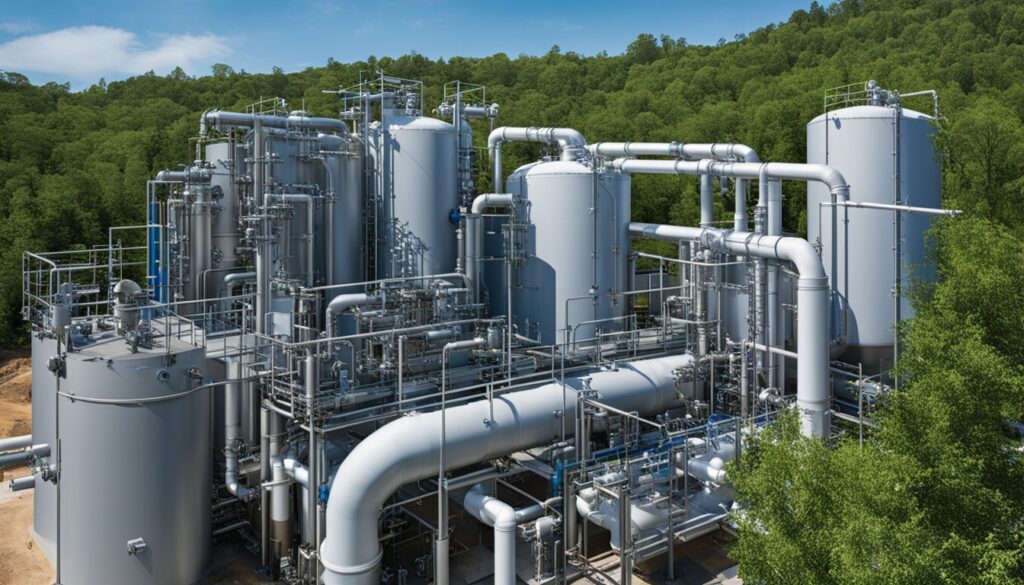
Key Takeaways
- Modern water purification systems utilize a range of advanced technologies to ensure the safety and quality of our drinking water.
- These systems employ various filtration techniques, such as reverse osmosis, activated carbon filters, and ion exchange resins, to remove a wide array of contaminants.
- Disinfection methods, including chlorination and ultraviolet (UV) purification, are crucial for eliminating harmful microorganisms like bacteria and viruses.
- Water softening and ion exchange processes help to improve the overall performance and efficiency of water purification systems.
- Strict regulatory standards and rigorous water testing procedures are in place to monitor the quality of our drinking water and protect public health.
Introduction to Water Purification
Ensuring access to clean, safe drinking water is a critical priority for communities worldwide. Water purification is the process of removing contaminants from water sources to produce water that is suitable for human consumption, industrial use, or other applications. This section will explore the importance of clean drinking water and provide an overview of the various water contaminants that can threaten water quality.
Importance of Clean Drinking Water
Clean, high-quality drinking water is essential for maintaining human health and well-being. Consuming contaminated water can lead to a range of waterborne illnesses, such as diarrhea, cholera, and hepatitis, as well as chronic health problems associated with exposure to heavy metals or chemical pollutants. By ensuring that our drinking water is free from harmful substances, we can protect our communities and safeguard public health.
Overview of Water Contamination Sources
Water contamination can occur from a variety of sources, including natural and human-induced processes. Common water contaminants include bacteria, viruses, parasites, heavy metals, pesticides, and industrial chemicals. These pollutants can enter water supplies through agricultural runoff, industrial discharges, improper waste disposal, and even natural geologic processes. Understanding the diverse range of water quality issues is crucial for developing effective water purification strategies.
Water Purification Systems
Water purification systems play a crucial role in ensuring that our drinking water is safe, clean, and free from contaminants. These systems utilize a variety of technologies to remove impurities, ranging from simple sediment filters to advanced reverse osmosis and ultraviolet (UV) disinfection methods. Understanding the different types of water purification systems and their applications is essential for both residential and commercial settings.
Types of Water Purification Systems
Water purification systems come in a wide variety of configurations, each designed to address specific water quality concerns. Some of the most common technologies used in these systems include:
- Reverse Osmosis (RO): A highly effective method for removing a wide range of contaminants, including dissolved salts, minerals, and even some organic compounds.
- Ion Exchange: A process that uses resin beads to remove specific ions, such as heavy metals or nitrates, from the water.
- Ultraviolet (UV) Disinfection: A method that uses UV light to inactivate harmful microorganisms, such as bacteria and viruses, without the use of chemicals.
- Activated Carbon Filtration: Filters that adsorb organic compounds, chlorine, and other contaminants, improving the taste and odor of the water.
Residential vs. Commercial Water Purification Systems
The selection of a water purification system largely depends on the specific needs and requirements of the application, whether it’s a residential setting or a commercial facility. Residential water purification systems are typically smaller in scale and designed to meet the water needs of a single household or a small building, while commercial water purification systems are often larger, more complex, and engineered to handle the higher water demands of larger facilities, such as hospitals, restaurants, or industrial sites.
The choice of a water purification system also depends on factors such as the quality of the incoming water, the desired water output, and the specific contaminants that need to be removed. By understanding the different types of water purification technologies and their applications, homeowners and business owners can make informed decisions to ensure that their water is safe, clean, and suitable for their intended use.
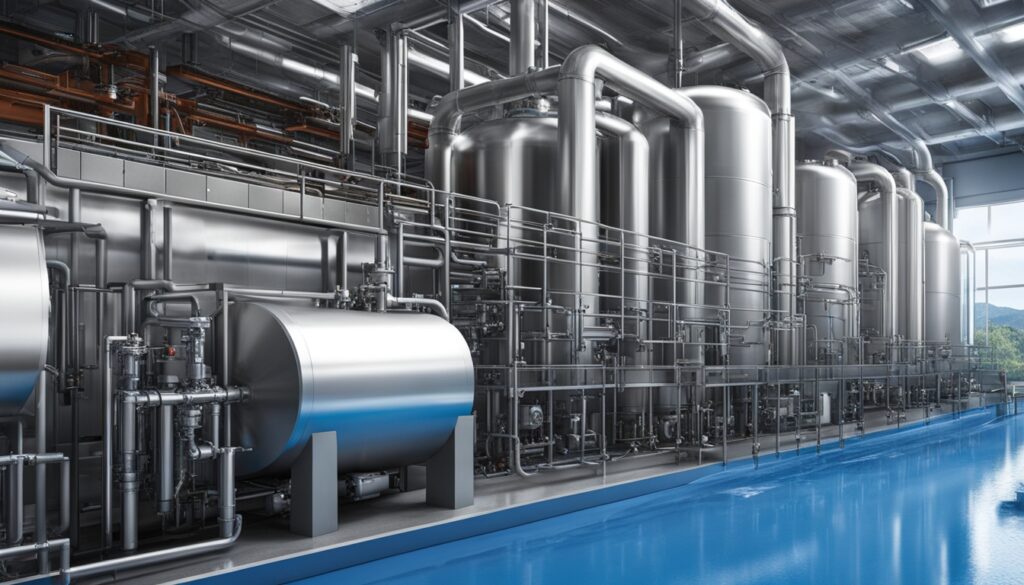
Water Filtration Techniques
In the realm of modern water purification systems, several advanced filtration techniques play a crucial role in ensuring the delivery of clean, safe drinking water. From removing larger particles and debris to eliminating dissolved contaminants, these filtration methods work tirelessly to transform raw water into a pure, refreshing resource.
Sediment Filters
Sediment filters are the first line of defense in many water purification systems. Designed to capture larger particles, such as dirt, rust, and sand, these filters effectively remove visible contaminants that can negatively impact the performance of subsequent filtration stages. By trapping these larger sediments, sediment filters help to prolong the lifespan of more sensitive filters and ensure the overall efficiency of the water purification process.
Activated Carbon Filters
Activated carbon filters are renowned for their ability to adsorb a wide range of organic compounds and chlorine, which can impart undesirable tastes and odors to the water. This filtration technique leverages the porous structure of activated carbon to capture these contaminants, effectively improving the overall quality and palatability of the purified water. Activated carbon filters are particularly effective in removing substances like pesticides, volatile organic compounds (VOCs), and disinfection byproducts, making them a crucial component of many residential and commercial water purification systems.
Reverse Osmosis
Reverse osmosis is a highly effective water filtration technique that utilizes semi-permeable membranes to remove a vast array of contaminants, including dissolved salts and minerals, heavy metals, and even microorganisms. This advanced process applies pressure to force water molecules through the membrane, leaving behind impurities and producing a purified water stream. Reverse osmosis is particularly adept at removing dissolved solids, making it an invaluable tool in the treatment of brackish water, seawater, and water with high mineral content. By consistently delivering high-quality, contaminant-free water, reverse osmosis systems have become a cornerstone of modern water purification technology.
Disinfection Methods
Ensuring the safety and purity of drinking water is a crucial aspect of modern water purification systems. Two primary disinfection techniques play a vital role in this process: chlorination and UV purification. These methods work to effectively kill or inactivate harmful microorganisms, such as bacteria, viruses, and protozoa, that can pose a threat to human health.
Chlorination
Chlorination is a widely adopted disinfection method that uses chlorine-based compounds to oxidize and destroy pathogens. This process involves adding controlled amounts of chlorine or chlorine-containing substances, such as sodium hypochlorite or calcium hypochlorite, to the water. The chlorine molecules attack the cell walls and disrupt the vital functions of microorganisms, rendering them inactive and unable to reproduce.
Chlorination is a cost-effective and relatively simple disinfection technique that has been successfully used in municipal water treatment facilities and private water purification systems. It is effective against a broad spectrum of microorganisms, including water disinfection and is a reliable method for ensuring the chlorination of drinking water.
UV Purification
Another effective disinfection method is UV purification, which utilizes ultraviolet light to inactivate microorganisms. In this process, the water is exposed to high-intensity UV radiation, typically generated by specialized lamps or LED-based systems. The UV light disrupts the DNA and RNA of pathogens, preventing them from replicating and ultimately eliminating their threat to human health.
UV purification is a chemical-free and energy-efficient disinfection technique that leaves no residual disinfectant in the water. It is particularly effective against a wide range of water disinfection pathogens, including viruses, bacteria, and protozoa. UV purification systems are commonly used in both residential and commercial water treatment applications, providing a reliable and environmentally friendly solution for ensuring the safety of drinking water.
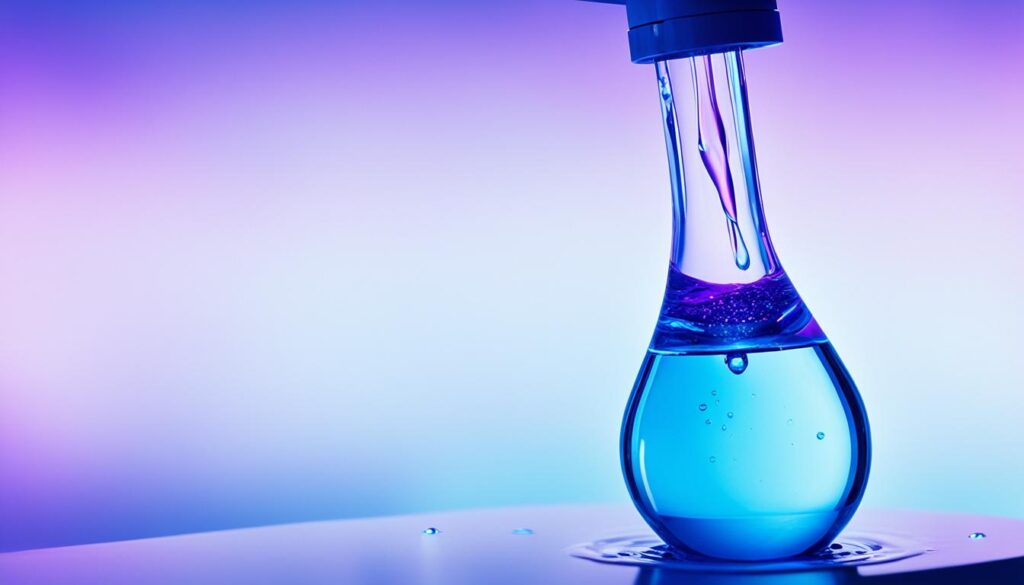
Water Softening and Ion Exchange
In modern water purification systems, two crucial processes play a vital role in improving the overall quality of water: water softening and ion exchange. These technologies work to address specific water-related issues, ensuring that the final product is clean, safe, and optimized for various applications.
Water Softening is the process of removing calcium and magnesium ions from the water, which can lead to the buildup of scale and reduce the efficiency of other water treatment processes. By eliminating these hardness-causing minerals, water softening helps to prevent the formation of limescale in pipes, appliances, and plumbing fixtures, thereby extending their lifespan and improving the overall performance of the water purification system.
Ion Exchange, on the other hand, is a technique that utilizes resin beads to remove specific ions, such as heavy metals or nitrates, from the water. This process involves the exchange of ions between the water and the resin, effectively trapping the unwanted ions and producing water that is free of these contaminants. Ion exchange is particularly effective in addressing issues related to water quality, making it a valuable component of many water treatment systems.
The integration of water softening and ion exchange technologies within water purification systems plays a crucial role in enhancing the overall quality of the water, ensuring that it is clean, safe, and optimized for various applications, from household use to industrial processes.
Advanced Water Treatment Technologies
As water scarcity and quality concerns continue to rise globally, the demand for more advanced water treatment technologies has grown substantially. Two innovative approaches that have gained significant traction in the industry are membrane filtration and desalination plants.
Membrane Filtration
Membrane filtration is a highly effective water purification technique that utilizes semi-permeable membranes to remove a wide range of contaminants from the water. These membranes are designed to selectively allow the passage of water molecules while blocking the passage of larger particles, dissolved salts, and other undesirable substances. This process is particularly useful for removing microorganisms, heavy metals, and organic compounds, making it a crucial component in modern advanced water treatment systems.
Desalination Plants
Another innovative approach to addressing water scarcity is the development of desalination plants, which are designed to remove salts and minerals from seawater or brackish water sources to produce freshwater. This technology is especially valuable in regions with limited access to clean, freshwater resources, as it enables the conversion of saline water into a reliable and sustainable water supply. Desalination plants employ a variety of techniques, such as reverse osmosis and thermal evaporation, to separate the salts and minerals from the water, resulting in a high-quality, potable water source.
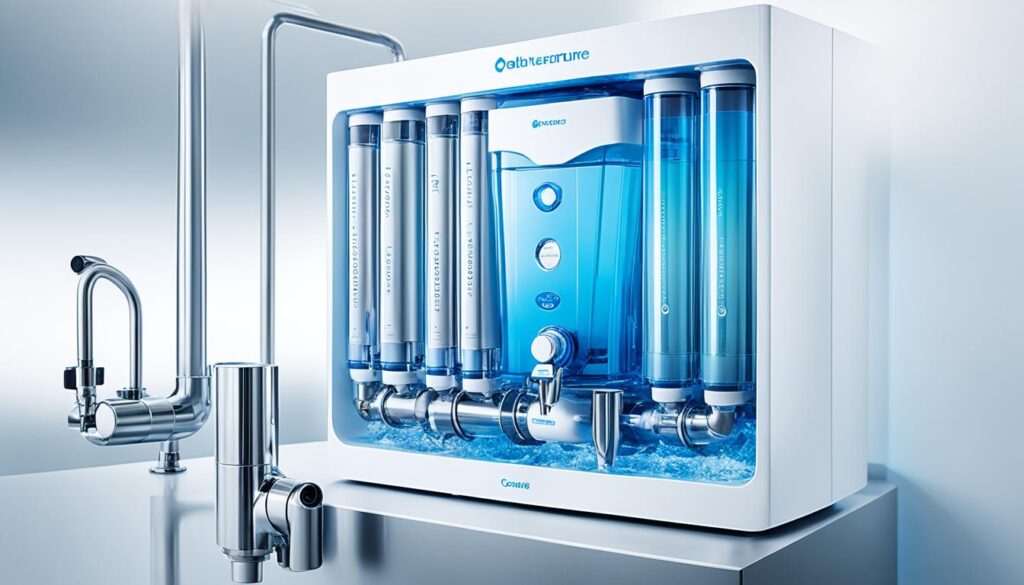
Both membrane filtration and desalination technologies have played a crucial role in expanding the availability of clean, safe drinking water in many parts of the world. As water scarcity and quality issues continue to evolve, these advanced water treatment solutions will likely become increasingly important in ensuring access to reliable and sustainable water supplies for communities around the globe.
Drinking Water Quality Standards
Ensuring the quality of drinking water is a critical priority for public health and environmental protection. In the United States, the Environmental Protection Agency (EPA) plays a pivotal role in establishing and enforcing regulations to safeguard the drinking water quality nationwide.
EPA Regulations
The EPA’s Safe Drinking Water Act sets the standards for drinking water quality, specifying maximum contaminant levels (MCLs) for a wide range of pollutants, including microorganisms, disinfection byproducts, and chemical compounds. These regulations mandate that public water systems monitor and treat their water to meet these stringent standards, ensuring the safety and purity of the drinking water supplied to communities across the country.
Water Testing and Monitoring
Maintaining drinking water quality requires comprehensive water testing and monitoring programs. Water utilities are required to regularly sample and analyze their drinking water to verify compliance with EPA regulations. This includes testing for the presence of harmful microorganisms, chemical contaminants, and other impurities that could pose a risk to public health.
In addition to municipal-level water testing, homeowners and businesses may also opt to conduct their own water quality monitoring to ensure the safety of their drinking water supply. Various water testing kits and professional services are available to assess the presence of specific contaminants and the overall quality of the drinking water.
Environmental Impact of Water Purification
As water purification systems become increasingly essential for maintaining clean and safe drinking water, it’s crucial to consider their environmental impact. The energy consumption and waste management associated with these systems play a significant role in their overall sustainability.
Energy Consumption
The various water treatment technologies employed in modern purification systems, such as reverse osmosis, UV disinfection, and desalination, require substantial amounts of energy for their operation. The energy used for pumping, filtration, and disinfection can contribute to a system’s carbon footprint, particularly in regions where the electricity grid relies heavily on fossil fuels. Water purification system manufacturers and utilities are actively exploring ways to improve energy efficiency, including the use of renewable energy sources and energy-efficient technologies, to minimize the environmental impact of their operations.
Waste Management
Another important environmental consideration is the disposal of the waste generated by water purification systems. The process of removing contaminants from water can result in the accumulation of concentrated waste, such as brine from reverse osmosis or spent filter media. Proper waste management is essential to prevent the release of these potentially harmful substances into the environment. Water purification system providers are working to develop sustainable waste disposal methods, including the recovery and reuse of valuable resources from the waste stream, to minimize the environmental footprint of their operations.
By addressing the energy consumption and waste management challenges associated with water purification, industry leaders and policymakers can ensure that these vital systems continue to provide clean and safe drinking water while also minimizing their environmental impact. Ongoing research and innovation in sustainable water treatment technologies will be crucial in this endeavor.
FAQ
What are the main types of water purification systems?
The main types of water purification systems include reverse osmosis, ion exchange, activated carbon filtration, UV disinfection, and sediment filtration. These systems can be used in both residential and commercial settings to remove a wide range of contaminants, including bacteria, viruses, heavy metals, and dissolved minerals.
How do reverse osmosis systems work?
Reverse osmosis systems use a semi-permeable membrane to remove dissolved salts, minerals, and other contaminants from water. The water is forced through the membrane, leaving behind the contaminants, which are then flushed away. Reverse osmosis is an effective method for removing up to 99% of dissolved solids, making it a popular choice for both drinking water and industrial applications.
What is the role of chlorination in water disinfection?
Chlorination is a widely used method of water disinfection, where chlorine-based compounds are added to the water to kill or inactivate harmful microorganisms, such as bacteria, viruses, and protozoa. Chlorination is an effective and cost-efficient way to ensure the safety of drinking water, particularly in municipal water treatment systems.
How do UV purification systems work?
UV purification systems use ultraviolet light to disrupt the DNA of microorganisms, rendering them unable to replicate and cause harm. This process is highly effective at killing a wide range of pathogens, including bacteria, viruses, and protozoa, without the need for chemical additives. UV purification is a popular choice for both residential and commercial water treatment applications.
What are the environmental considerations for water purification systems?
Water purification systems can have an environmental impact, primarily through their energy consumption and the management of waste products. Manufacturers and utilities are working to improve the energy efficiency of these systems and develop more sustainable waste disposal methods, such as recycling spent filter media or brine from desalination plants. Minimizing the environmental footprint of water purification is an important consideration for ensuring the long-term sustainability of these systems.

